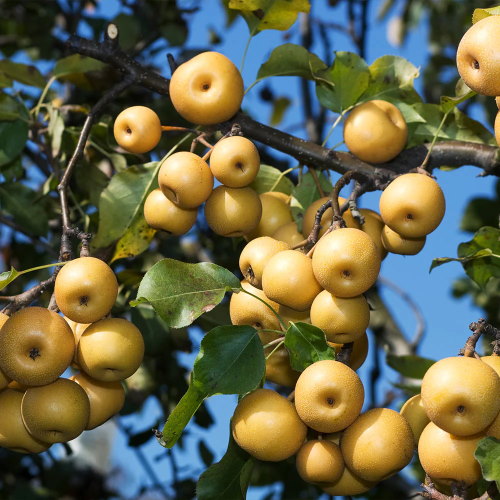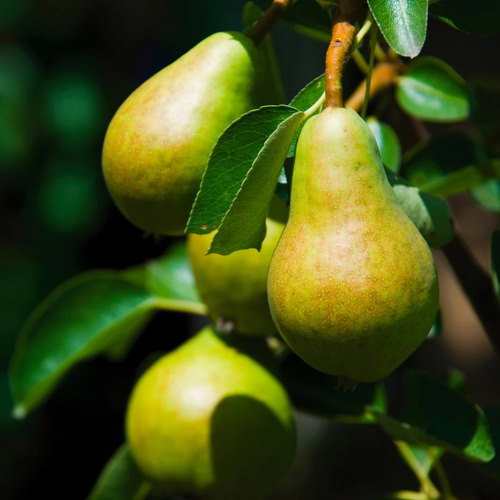How to grow a pear tree – an expert guide to healthy and productive fruit, from planting to harvesting
Discover all about growing pears with tips from experienced fruit tree specialists
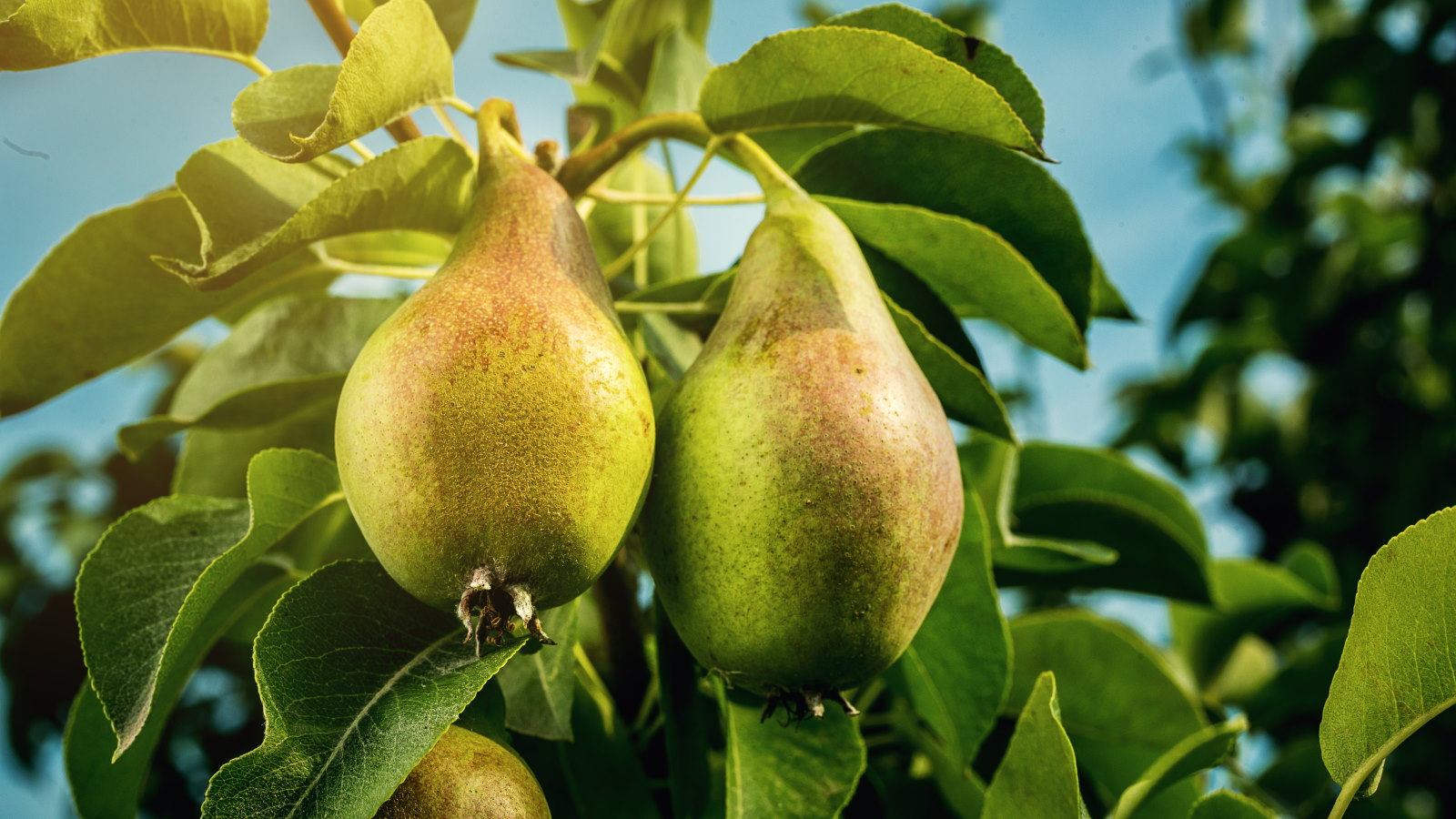

Pears are one of the most popular fruit trees to grow around the world and growing a pear tree in your garden allows you to harvest juicy and sweet fruits that surpass any you will find in grocery stores.
Pear trees are easy to grow and very versatile. The range of types available means you can grow pear trees as freestanding specimens, have trained trees on walls or fences, or even dwarf varieties growing in a pot. A healthy and productive pear tree can provide crops of delicious fruit every late summer for decades.
Pears are one of the best fruit trees to pick for sunny and sheltered spots but will produce the best fruit when there is another nearby tree for pollination. If you want to learn how to grow a pear tree, this guide looks at how to plant, maintain and harvest pears with tips from two fruit tree experts.
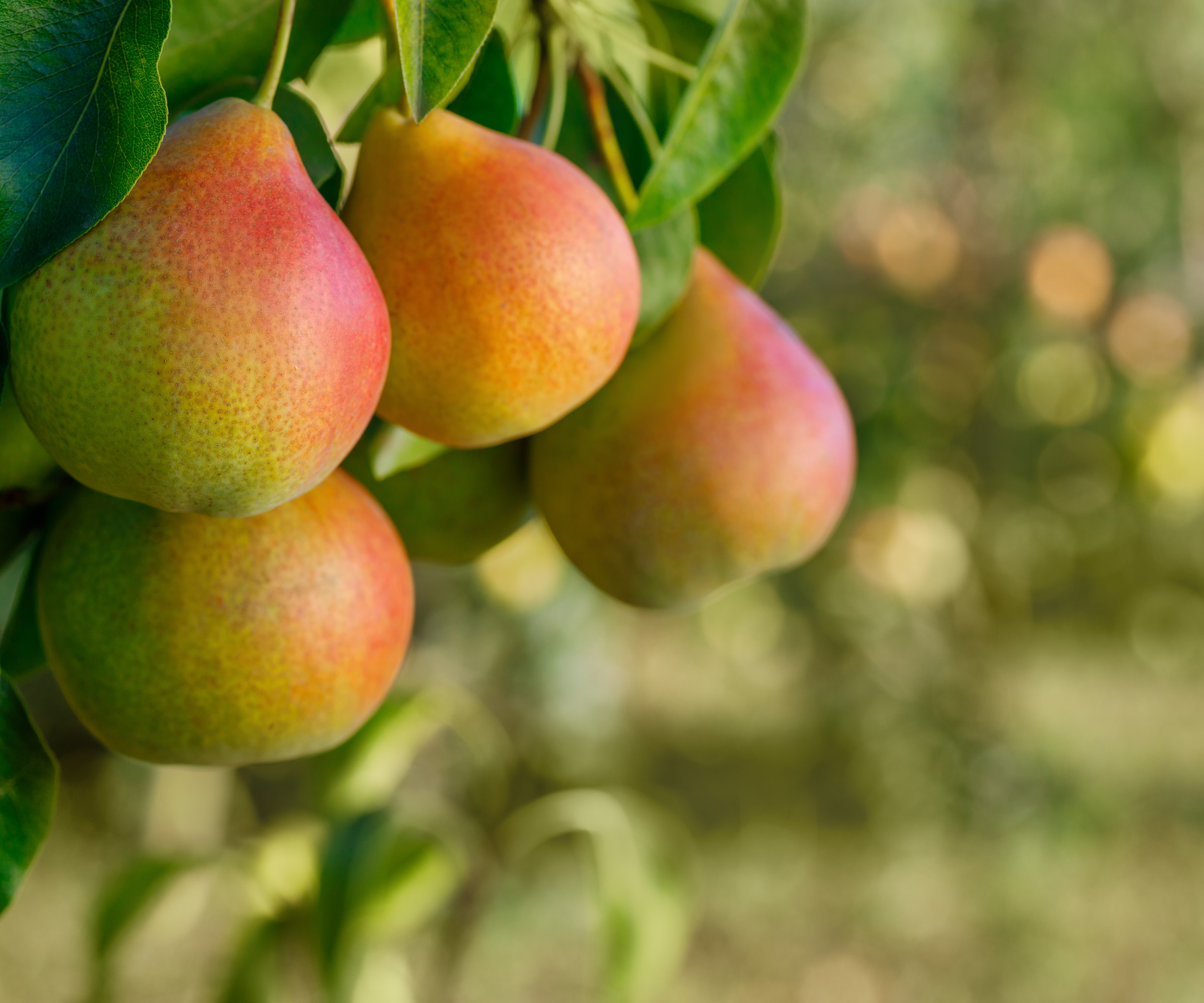
How to grow a pear tree - our expert guide
Pear trees are simple-to-grow fruit trees that can thrive in US hardiness zone 3 to US hardiness zone 10. There are thousands of pear varieties globally, however, a much smaller selection of European and Asian pears are commonly available to grow as part of your backyard ideas. A good selection of trees is still available, including pears in different colors, sizes, and flavors.
It is important to choose the right variety for your US hardiness zone. Also, pears are grafted onto particular rootstock to dictate their growth. It makes picking the right type and rootstock crucial to ensure the tree fits your garden, as full-size pear trees can reach 30 feet. The advantage of dwarf rootstocks is that you can grow fruit trees in pots or small backyards.
The vast majority of pears need another nearby tree for successful pollination and fruit set. There are some self-fertile pears, but even these will fruit better with a partner. Pears can take a few years to start flowering and fruiting, though when they start they can produce fruit for many years to come.
Let’s take a close look at how to grow a pear tree, with some tips from fruit tree experts. We will start with when, where, and how to plant a pear tree.
Pear tree planting tips

Pear trees are available to purchase as bare-root or potted trees - you can grow a pear tree from seed but it requires a lot more patience. Bare-root pear trees are available only during dormancy from late fall to early spring and, while potted trees may be in garden centers year-round, fall and spring remain the best time to plant fruit trees.
Providing the soil is workable, you can plant bare-root pear trees from fall to spring. Plant potted trees once the risk of frost has passed in spring and before the onset of warm summer weather.
Pear trees need good light levels to produce fruit and will thrive in a sunny and sheltered spot. They can grow as specimen trees or in trained forms against warm walls or fences, but getting the amount of sunlight right is important. ‘Pear trees love full sun, needing 6–8 hours of direct sunlight daily to grow strong and produce their best fruit,’ says Kate Brines from Stark Bros’.
Well-drained soil is also important as pear trees are liable to rot if planted in soil that regularly waterlogs. They can be forgiving of less-than-ideal soil types, providing they do not sit too wet. Kate Brines adds: ‘While they prefer well-drained, loamy soil with a pH between 6.0 and 7.0, they’re adaptable and can handle clay or sandy soils.
‘To give your tree an extra boost, top-dress the soil with compost or organic mulch - this helps retain moisture and adds nutrients over time, supporting healthy roots and growth.’
Dig a deep and wide hole to accommodate the plant’s root system when planting fruit trees. Spread the roots and position the tree so the graft is a few inches above the soil line. Firm down the soil to remove air pockets and thoroughly water the young tree before mulching with organic matter.

Katie Brines is a gardener and grower, as well as being part of the small marketing team at Stark Bro's. The nursery has provided quality fruit trees, nut trees, berry plants, and garden plants across America for over 200 years.
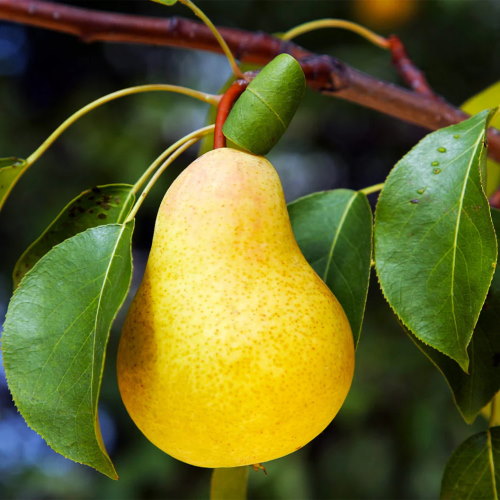
Kieffer pear trees are suited to US hardiness zones 4-9 and can grow 15-25 ft. They produce large fruit that is crispy and juicy.
Pear tree care tips
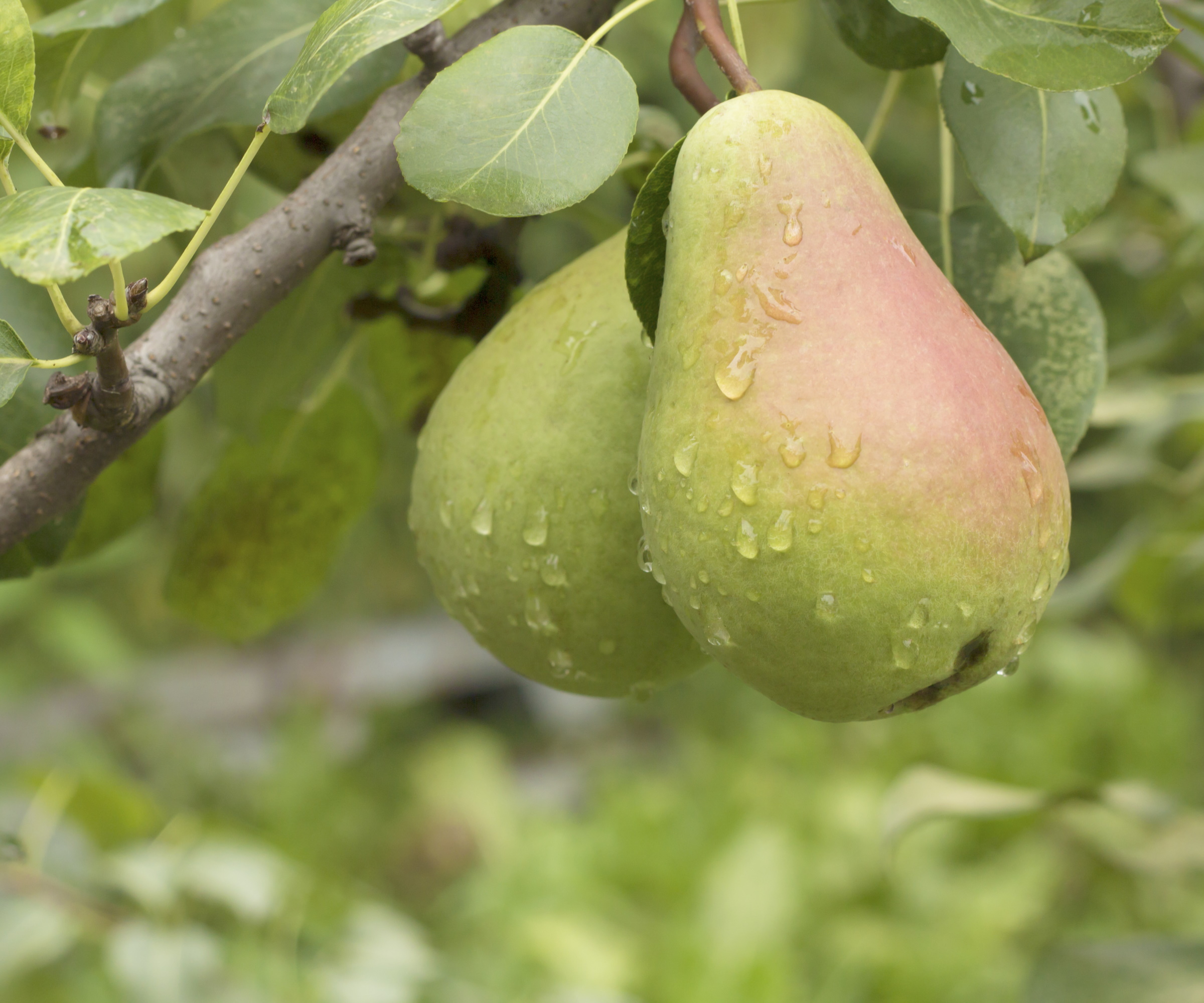
- Watering - Regular watering is key for the early years to get the pear tree established and ensure it puts down strong roots. ‘A deep soak once or twice a week usually does the trick, depending on the weather,’ says Katie Brines. ‘After that, pear trees are pretty drought-tolerant fruit trees, but extra water during dry spells helps with fruit production.’ As touched upon by Katie, watering is essential as the fruit develops and even established pear trees may benefit from deep watering in extended dry summer spells.
- Fertilizing - Annual feeding and mulching can keep pear trees healthy and productive. They do not need lots of fertilizing and care must be taken to not overfertilize trees with too much nitrogen. This would be a fertilizing mistake that encourages leafy growth rather than fruit and makes the pear tree more susceptible to fire blight. ‘Fertilizing once or twice a year with a balanced or low-nitrogen feed, like a 10-10-10 formula, helps support healthy growth and fruit production,’ advises Maureen Wright, a plant expert with Fast Growing Trees. ‘Patience is the key with pear trees. Nurture them well, and they’ll reward you with a great harvest.’ To fertilize fruit trees, a granular product can be scattered and worked into the soil, or you can get fertilizer spikes - such as these fruit tree fertilizer spikes at Amazon - that just need to be inserted into the soil.
- Pruning - Knowing when to prune pear trees keeps them healthy and ensures a good crop. Prune the fruit tree when it is dormant, ideally in late winter or early spring, and trained pear trees will need some summer pruning. Prune pear trees by removing dead, damaged, or diseased stems and thin branches to create an open and well-shaped center. Remove vigorous vertical watershoots and suckers from low down on the tree to focus the energy onto fruiting.
- Harvesting - Getting the light levels, watering, and feeding right will help to get a pear tree to fruit successfully. Pears are ready to harvest from late August through September, depending on the variety, and are picked from the tree early to be ripened indoors. Pears lighten in color as they ripen and should separate from the tree easily when grasped and twisted. Do not pull the pear too hard as it risks damaging the tree, instead leave a pear on the tree if it doesn’t come away easily and try again a few days later. Pears can be stored somewhere cool to mature, then kept in a refrigerator for a week or in a cold and dark place for up to two months.

Maureen has been a Certified Oklahoma State University Master Gardener since 2012 and is working on her ISA Arborist Certification. Her background in social work led her to an interest in horticultural therapy training and she spends a lot of her time working with at-risk youth and adults working on community garden projects.
FAQs
Can pear trees grow in pots?
Pear trees can be grown in containers if you have a small backyard or want homegrown fruit on a deck or balcony. The trick to growing fruit trees in pots is to choose dwarf varieties that will remain compact and suited to a smaller space. Choose a large container around 18-20 inches wide so it stays upright against winds. The pot must have drainage holes and be filled with well-draining potting soil. Place the potted fruit tree in a sunny spot and keep a close eye on watering plants in containers, as the soil in pots can dry out quickly in warm weather.
Do pear trees bear fruit in the first year?
Pear trees are not guaranteed to bear fruit in the first year unless you buy an older, larger potted pear tree. Bare-root fruit trees tend to be one or two years old and potted fruit trees are usually at least two years old, although you can get older ones at an increased price. Growing pears requires patience as it can take 3-7 years to produce the first fruit. The exact time will depend on the cultivar and rootstock, but dwarf pear trees do fruit sooner.
Pear trees are pruned in winter, along with apple trees. However, not all fruit trees are, and it would be an error to prune stone fruits in winter. The advantage of pruning fruit trees in winter is that the tree can cope with pruning better and recover quickly when it starts growing again in spring.
Never prune pear or apple trees in late summer or fall as the tree needs to focus on going into dormancy. Trimming will cause a flush of new growth, that will not harden off in time and be damaged by the winter colds - leaving the tree susceptible to pests and diseases.
Sign up to the Homes & Gardens newsletter
Design expertise in your inbox – from inspiring decorating ideas and beautiful celebrity homes to practical gardening advice and shopping round-ups.

Drew’s passion for gardening started with growing vegetables and salad in raised beds in a small urban terrace garden. He has worked as a professional gardener in historic gardens and specialises in growing vegetables, fruit, herbs, and cut flowers as a kitchen gardener. That passion for growing extends to being an allotmenteer, garden blogger, and producing how-to gardening guides for websites. Drew was shortlisted for the New Talent of the Year award at the 2023 Garden Media Guild Awards.
-
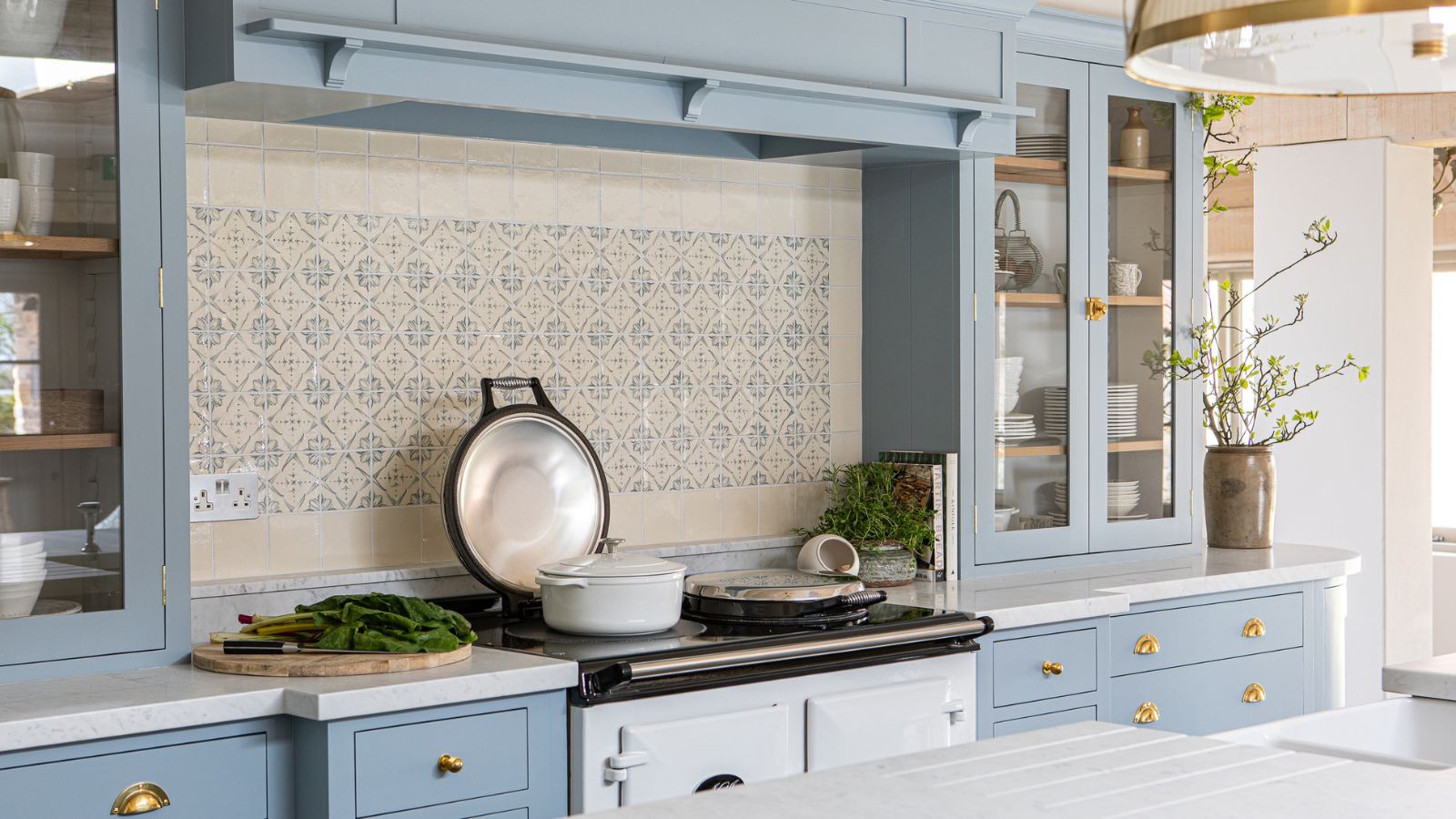 Professional cleaners say this one 'powerful' tool is the surprisingly simple answer to serial chore procrastination
Professional cleaners say this one 'powerful' tool is the surprisingly simple answer to serial chore procrastinationA mood board is a simple way to 'reframe cleaning as something satisfying'
-
 This hot sleeper just found the perfect cooling mattress that's ended the sleepless summer nights – turns out $3,000 is the price you pay for an incredibly cool night's sleep
This hot sleeper just found the perfect cooling mattress that's ended the sleepless summer nights – turns out $3,000 is the price you pay for an incredibly cool night's sleepThe Leesa Legend Chill Hybrid Mattress might be an investment, but I think it's worth it to finally find something that actually keeps me cool throughout the whole night
